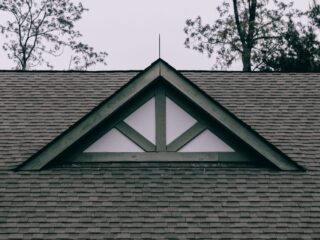
A roof leak can quickly turn from a minor inconvenience into a significant problem if not addressed properly. Heavy rainstorms or snowfall often expose weaknesses in a roof’s structure, leading to water intrusion that threatens your home’s safety and integrity. Knowing how to respond effectively can save time, money, and stress.
Immediate Response Actions
When you first notice a roof leak, acting swiftly and prioritizing safety is essential. Avoid climbing onto the roof during a storm or immediately afterward, as slippery surfaces and ongoing weather conditions increase the risk of accidents. Instead, focus on protecting your home’s interior and limiting damage. Begin by moving furniture, electronics, and personal belongings out of harm’s way. If water is dripping, place buckets or containers under the leak to collect water and prevent it from spreading further.
While these actions are crucial for minimizing damage, the next step is arranging professional repairs. For reliable roof leak repair services, visit https://americanqualityremodeling.com/roofing/leaks/. Their team can address the source of the problem and ensure long-term protection for your home.
To protect your flooring, use tarps, plastic sheets, or even garbage bags to create a barrier. If the ceiling begins to sag from pooling water, relieve the pressure by making a small drainage hole in the center of the bulge. This allows water to escape in a controlled manner, reducing the risk of a sudden collapse. While these measures don’t solve the problem at its source, they help stabilize the situation until professional repairs can be arranged.
Common Causes of Roof Leaks
Roof leaks often stem from a combination of structural vulnerabilities and external conditions. During heavy rain, clogged gutters and downspouts are common culprits. When these drainage systems fail, water accumulates along the roofline and seeps into weak points. Similarly, missing or damaged shingles expose the underlayment, creating an easy path for water to penetrate. Flashing around chimneys, vents, or skylights may also crack or loosen over time, allowing rainwater to infiltrate.
In snowy conditions, the formation of ice dams poses a significant threat. As snow melts and refreezes at the roof’s edge, it blocks proper drainage and forces water to back up under shingles. Valley areas where two roof sections meet are also prone to leaks as they funnel water into concentrated streams. Poor attic ventilation further exacerbates the issue by promoting condensation that adds to the moisture burden.
Interior Damage Control
Once you’ve managed the immediate crisis, minimize interior damage. Locate the source of the leak and identify any patterns of water intrusion. This could involve tracing water stains on the ceiling or examining walls for damp spots. Setting up fans or dehumidifiers helps dry affected areas and prevent mold growth, while absorbent materials like towels or sponges can soak up standing water.
If water has breached the ceiling, address the damage promptly. Create drainage holes in any sagging areas to prevent further stress on the ceiling material. As you manage these issues, keep a record of the damage and temporary fixes, as this documentation will prove invaluable during insurance claims or discussions with contractors.
Assessment and Documentation
After taking initial steps to control the leak and minimize damage, conduct a thorough assessment of the situation. Begin by inspecting your home from the inside, particularly the attic, where water often enters first. Look for damp insulation, water stains on wooden rafters, or pooling near the roof’s edges. These indicators help pinpoint the source of the leak and gauge its severity.
Once the interior inspection is complete, document the damage meticulously. Take clear, well-lit photos of water stains, ceiling damage, and any affected belongings. Include close-ups of critical areas like bulging ceilings or soaked insulation. Create a written record of the events, noting when the leak began, weather conditions, and any immediate actions taken. These records are essential not only for professional evaluations but also for filing insurance claims.
Exterior assessments should be left to professionals, especially if conditions remain unsafe. If the weather has improved, a contractor can examine the roof’s surface for signs of damage, such as missing shingles, clogged gutters, or cracked flashing. A trained eye ensures no issue goes unnoticed and minimizes the risk of injury from attempting to inspect the roof yourself.
Professional Solutions
Addressing roof leaks requires a balance of temporary fixes and long-term solutions. For immediate repairs, a roofing contractor can replace damaged shingles, seal cracks in flashing, and clear out debris from clogged gutters. These steps restore the roof’s integrity and prevent further water intrusion. If the damage is more extensive, professionals may recommend additional measures, such as applying temporary patches or tarps to cover vulnerable areas.
For lasting results, long-term preventative solutions should be implemented. Installing ice and water shields in areas prone to ice damming, such as roof valleys and edges, adds a protective layer against melting snow. Gutter systems can be upgraded with guards or heating elements to ensure water flows freely during winter. Regular maintenance, including seasonal inspections, keeps minor issues from escalating into major problems.
Insurance and Documentation
Roof leaks caused by severe weather are often covered under homeowner’s insurance policies, but the claims process can be daunting without proper documentation. Start by reviewing your policy to understand the scope of coverage and any exclusions related to water damage. Insurance adjusters will require proof of the damage and evidence that you’ve taken steps to mitigate further issues.
Photographs and written records become critical at this stage. Submit a detailed account of the damage, including repair estimates from licensed contractors. Keep receipts for temporary fixes, such as tarps or dehumidifiers, as these costs may be reimbursed. If the adjuster requests additional documentation, respond promptly to avoid delays in claim processing.
Proactive Tips for Roof Leak Prevention
Preventing roof leaks is always better than dealing with their aftermath. Regular maintenance plays a crucial role in safeguarding your roof from weather-related damage. Begin by scheduling seasonal inspections, particularly before the rainy and snowy seasons. These inspections can identify and address minor issues such as loose shingles, deteriorating flashing, or clogged gutters before they develop into more significant problems.
Ensure your gutters and downspouts remain clear of debris throughout the year. Installing gutter guards helps reduce the frequency of clogs, while heating elements can prevent ice dams from forming in colder climates. For homes in snowy regions, improving attic insulation and ventilation is essential. Proper insulation prevents heat from escaping, reducing the likelihood of snow melting unevenly and refreezing at the roof’s edges.
Consider investing in high-quality roofing materials designed for your region’s climate. Durable shingles, ice and water shields, and weatherproof membranes protect vulnerable areas like roof valleys and along eaves. Adding a regular roof maintenance schedule to your home care routine ensures your roof remains in good condition year-round.
Emergency Preparedness
Extreme weather can sometimes overwhelm even the most well-maintained roofs despite your best efforts. Having an emergency plan in place makes all the difference. Keep a basic repair kit, including tarps, adhesive patches, duct tape, and buckets. Store the contact information of reliable roofing professionals who can respond quickly in an emergency.
Additionally, familiarize yourself with the signs of a compromised roof, such as ceiling discoloration, water dripping during storms, or increased attic humidity. Prompt action at the first sign of trouble can mitigate the extent of damage and save you from more extensive repairs down the line.
Roof leaks, especially after heavy rainstorms or snowfall, can cause significant stress and damage if not handled promptly and correctly. Acting quickly to control interior damage, thoroughly documenting the situation, and calling in professional assistance are key steps in managing a leak. Equally important is adopting preventative measures, such as regular maintenance, gutter cleaning, and investing in durable roofing materials.
By staying proactive and prepared, you can protect your home from the costly consequences of roof leaks, ensuring its safety and comfort for years. Remember, a well-maintained roof isn’t just a shield against the elements—it’s a cornerstone of your home’s resilience and value.







